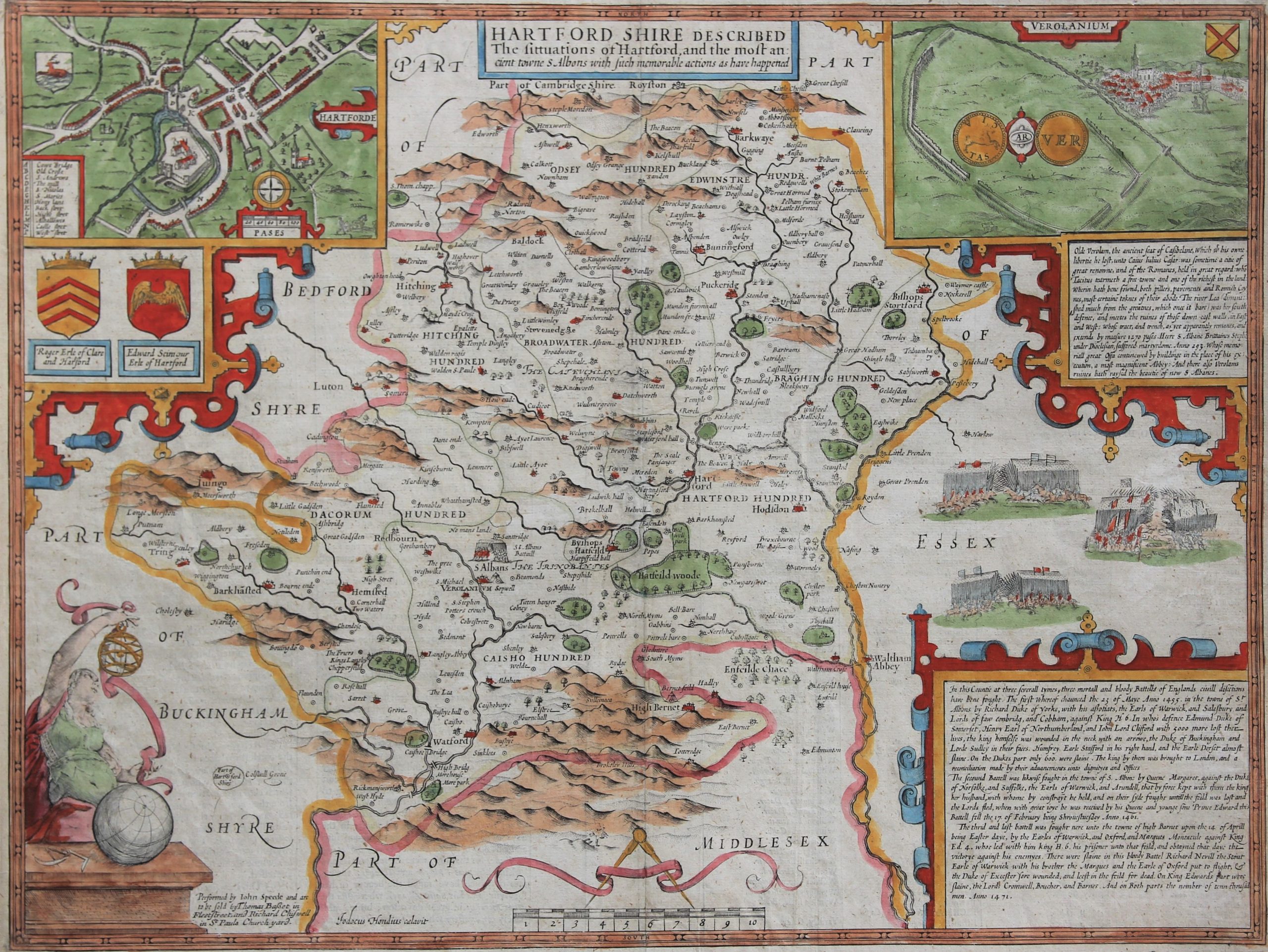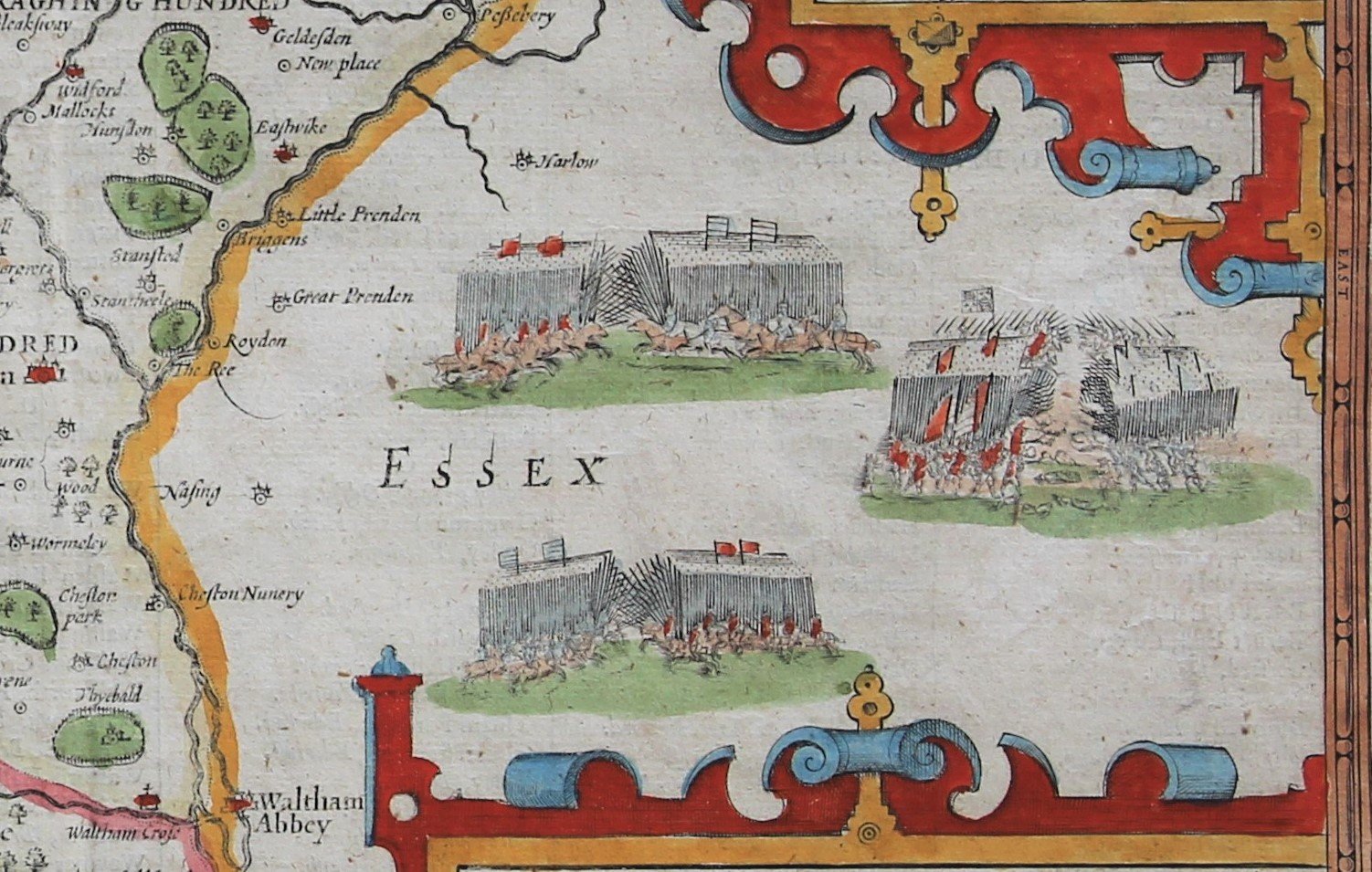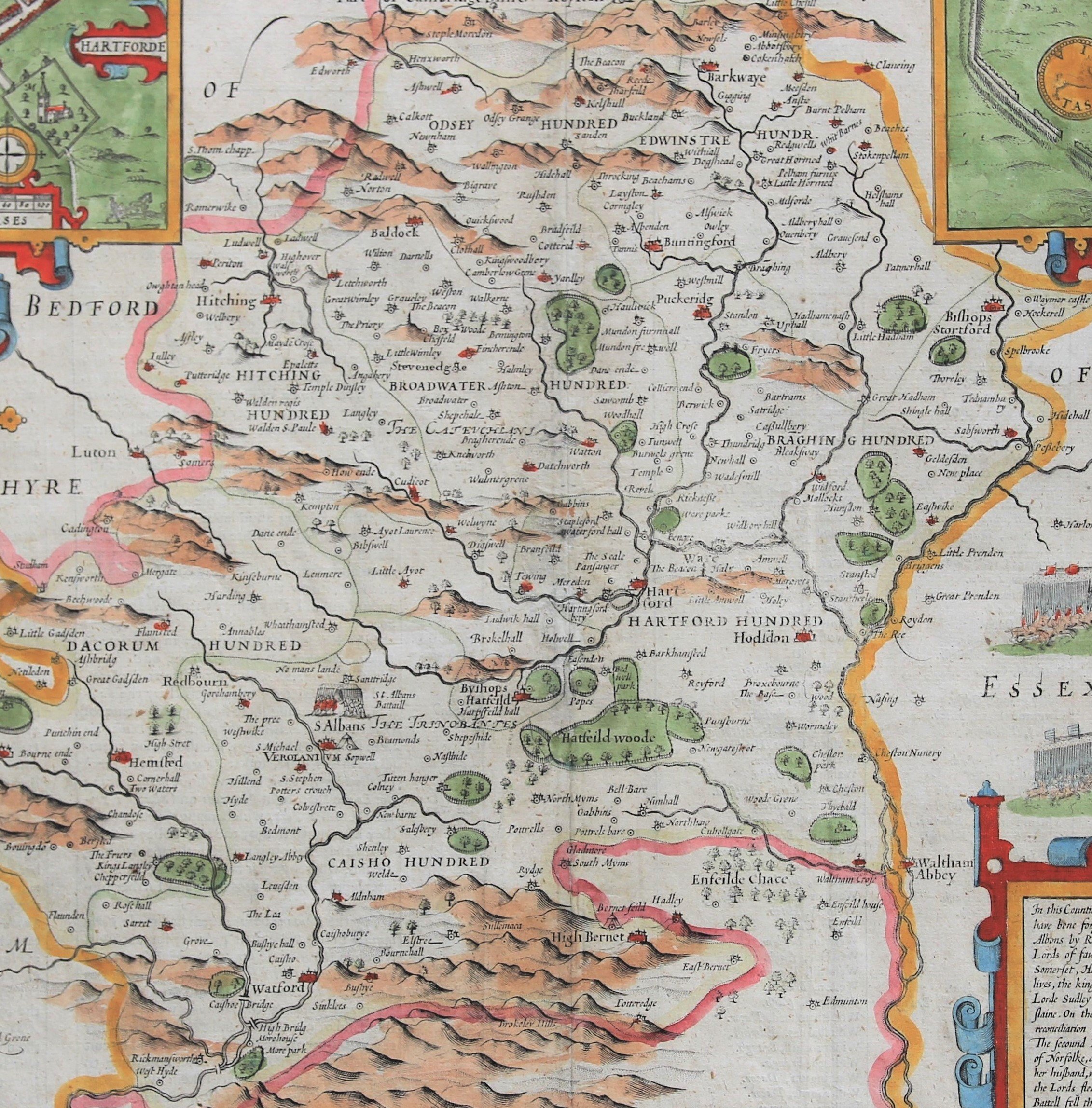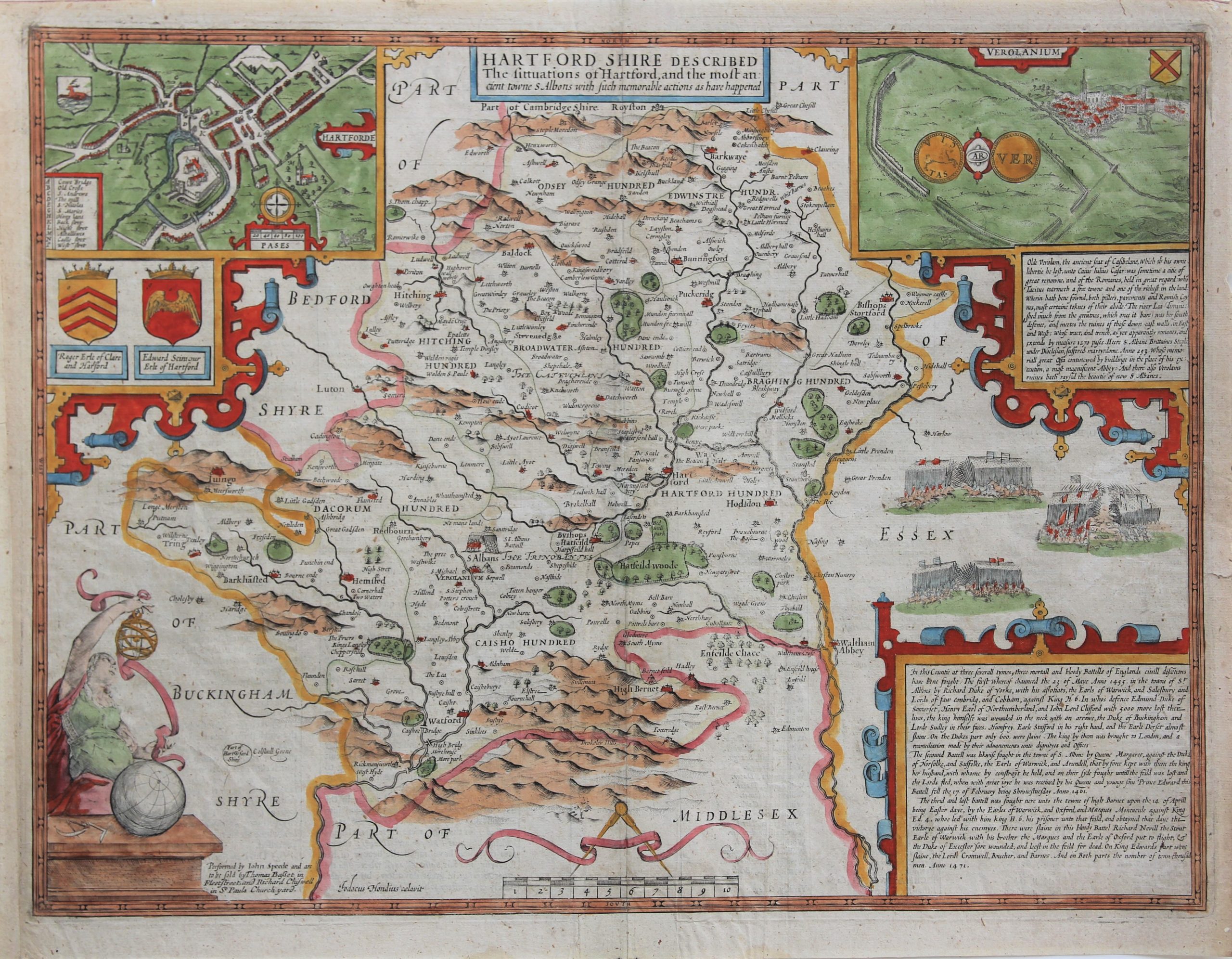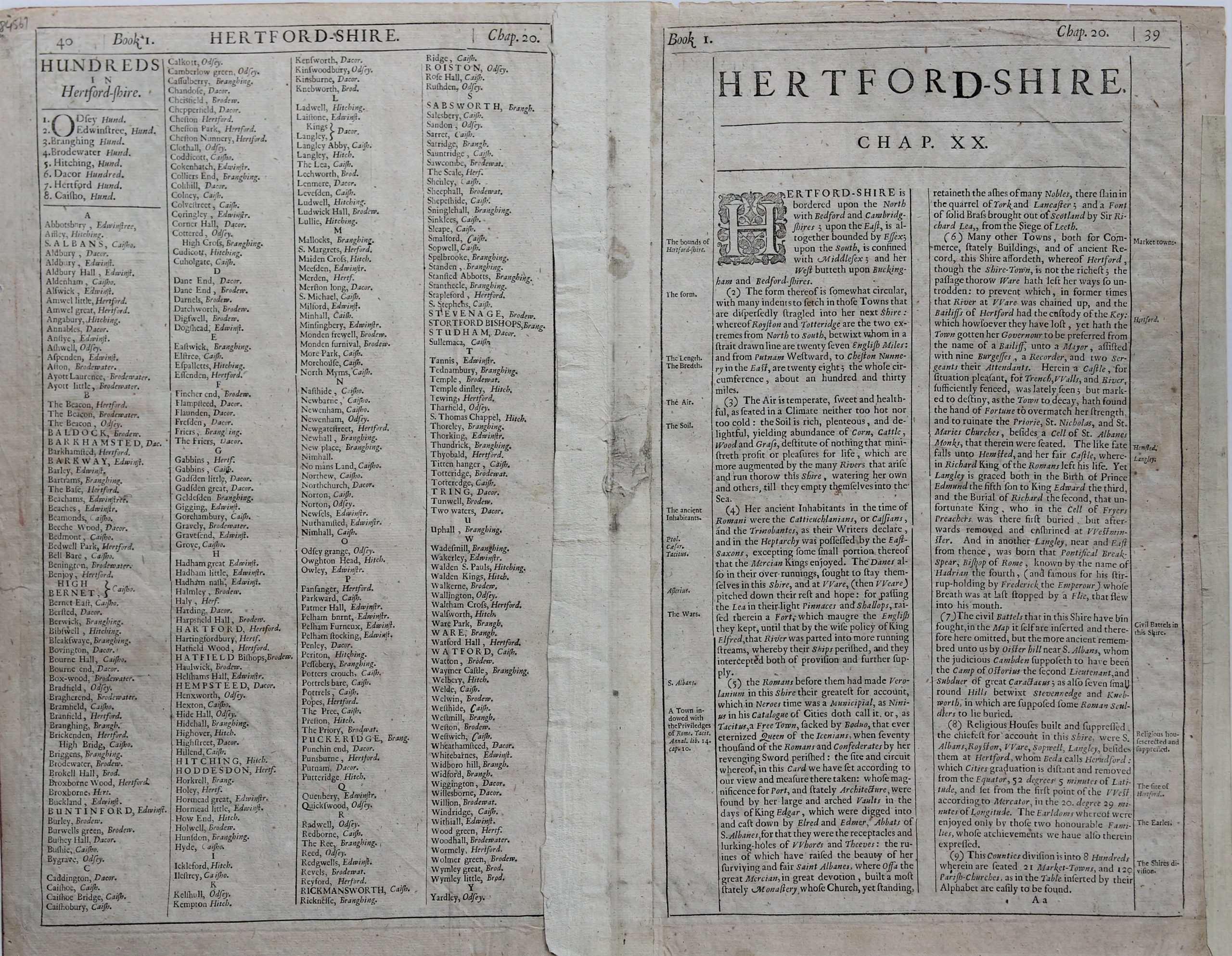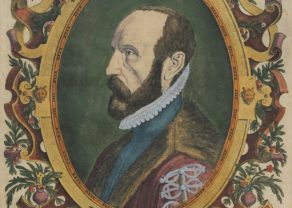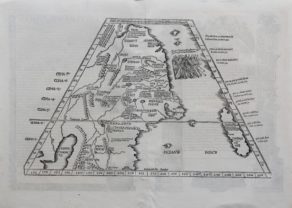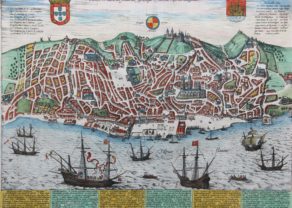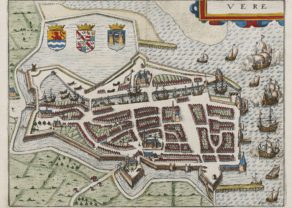Hertfordshire
Detail
Date of this edition: 1676
Dimensions (not including margins): 38 x 51 cm
Dimensions (with margins): 41,5 x 53,7 cm
Condition: Good. Sharp copper engraving. with decent margins .Centre fold as published. Slight second vertical fold to the right. Superb colouring. Slight age-toning. Strengthening in left margin.
Condition rating: A
Verso: text in English
From: Theatre of the Empire of Great Britaine
In stock
Hertfordshire
Full title as it appears at the top of the map: “Hartford Shire described, The situations of Hartford and the most ancient towne S.Albons with such memorable actions as have happened'”
This map is the Thomas Bassett & Richard Chiswell, John Speed edition ca 1676. A copperplate engraved map of the county in full early (if not original) colour.
The inset plan of Hertford, probably surveyed by Speed himself, is the earliest known of this town. The other plan depicts the ruins of the Roman city of Verulamium with a view of St. Albans in the near distance plus, and two arms of the Earls of Hertford.
At the right Speed shows three different battles of England (1455, 1461 and 1471) all described in detail in the right bottom cartouche.
On the reverse of the map there is a complete set of text briefly describing the history and topography of the county.
John Speed
John Speed (1551 or ’52 – 28 July 1629) was the best known English mapmaker of the Stuart period. Speed came to mapmaking late in life, producing his first maps in the 1590s and entering the trade in earnest when he was almost 60 years old.
He was born in the Cheshire village of Farndon and from his youth pursued his father’s profession of tailoring. He later moved to London to continue this trade, though Speed’s real passions lay elsewhere, namely in the fields of antiquity and cartography. He joined the Society of Antiquaries where his enthusiasm soon attracted the attention of notables such as William Camden and Sir Fulke Greville. In 1596 Greville provided Speed with a full time allowance to write a ‘Historie of Great Britaine’. It was during this project that Speed decided to add a cartographic supplement to the work and it was from this that his famous atlas, ‘The Theatre of the Empire of Great Britaine’, was born.
Today his fame lies with two atlases The Theatre of the Empire of Great Britaine (first published 1612), and the Prospect of the Most Famous Parts of the World (1627). While The Theatre … started as solely a county atlas, it grew into an impressive world atlas with the inclusion of the Prospect in 1627. The plates for the atlas passed through many hands in the 17th century, and the book finally reached its apotheosis in 1676 when it was published by Thomas Bassett and Richard Chiswell, with a number of important maps added for the first time.
Related items
-
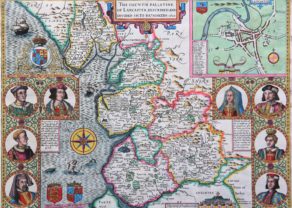
Lancashire and the War of Roses
by John SpeedPrice (without VAT, possibly to be added): €1 600,00 / $1 776,00 / £1 424,00A unique map
-
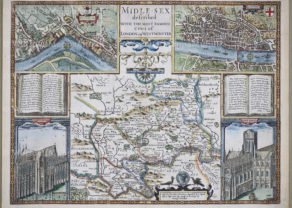
Middle-Sex described with the most famous cities of London and Westminster
by John SpeedPrice (without VAT, possibly to be added): €2 000,00 / $2 220,00 / £1 780,00 -
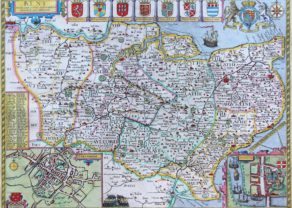
Kent – Kent with her Cities and Earles Described and Observed
by John SpeedPrice (without VAT, possibly to be added): €1 200,00 / $1 332,00 / £1 068,00
